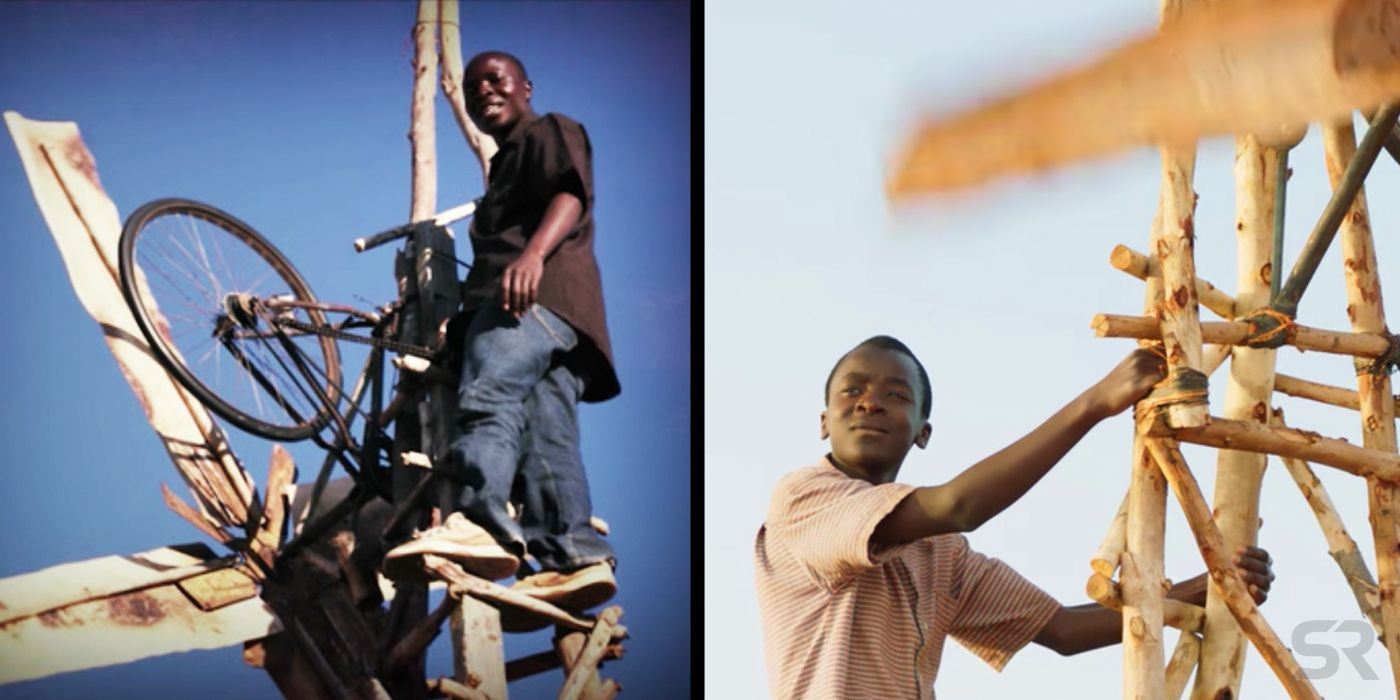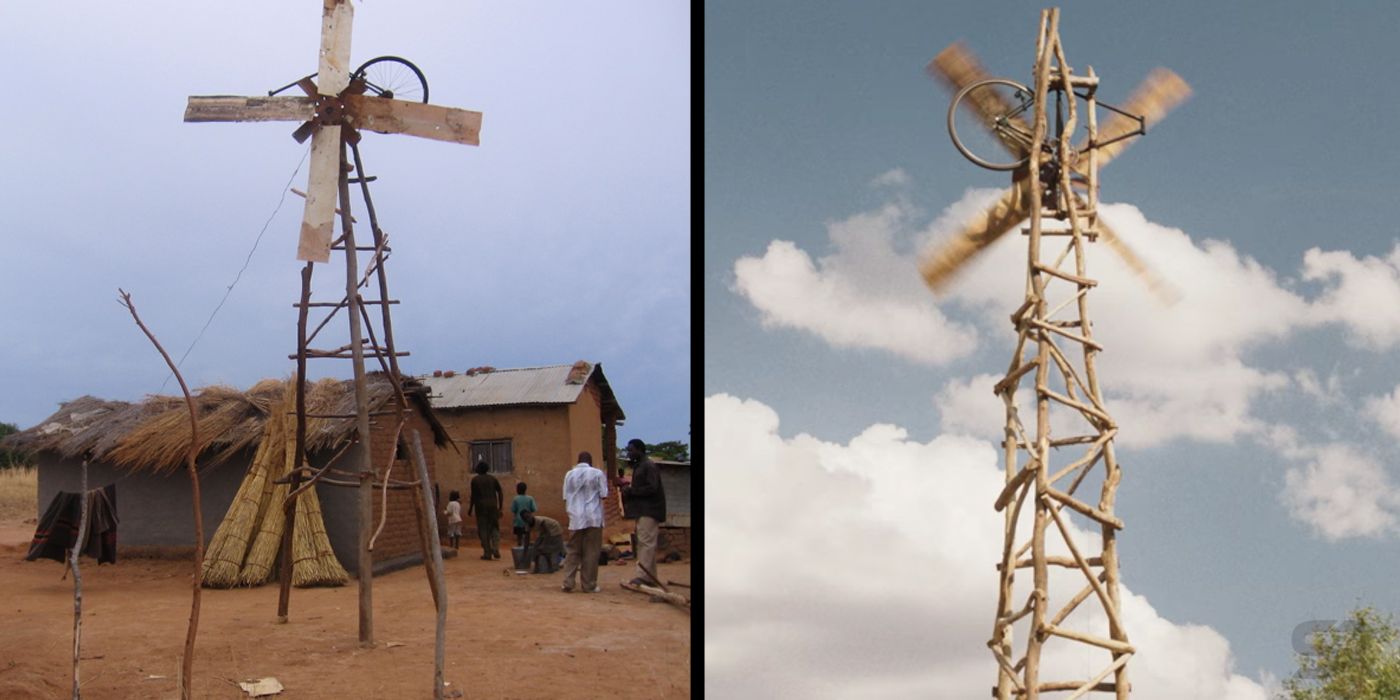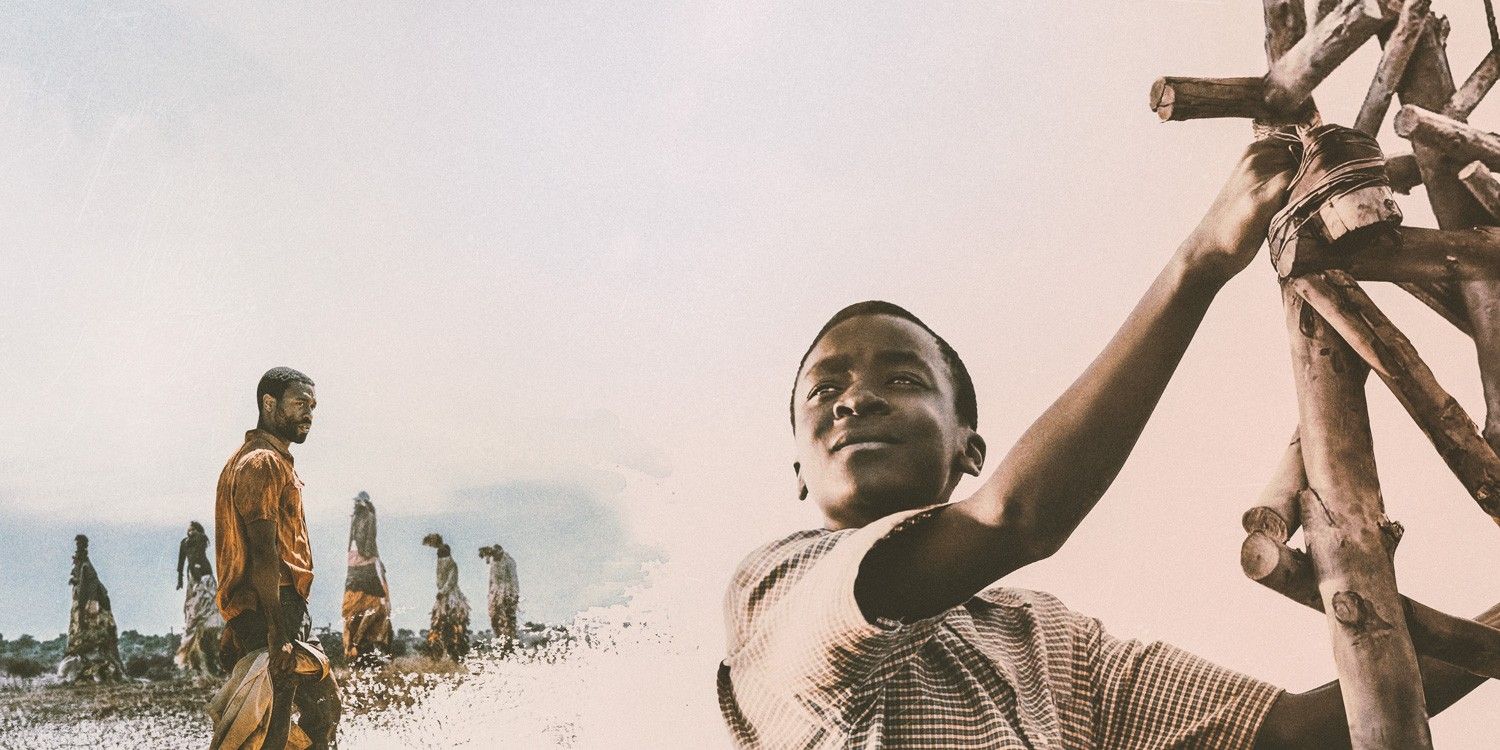Netflix's The Boy Who Harnessed The Wind is based on a disturbing but ultimately uplifting true story, although did change several aspects of the real William Kamkwamba's (Maxwell Simba) life. Chiwetel Ejiofor's directorial debut is out now on Netflix and is already one of the streaming service's must-see films of 2019.
Telling the story of a teenager living in near-poverty in early-2000s Malawi, The Boy Who Harnessed The Wind explores political upheaval, societal crisis and family drama to tell a story about youth's relation to, and evolution past, the old. The movie comes to an end with science-obsessed Kamkwamba saving his village through the development of a windmill, bringing them electricity and, more importantly, water.
Related: The Boy Who Harnessed The Wind Trailer
The film then proceeds to reveal what happened next to the family: William went to Dartmouth College, his family stayed farming, and his sister is happily married. However, while The Boy Who Harnessed The Wind is faithful to the core of Kamkwamba's story and how his hard work elevated his village and saw him go to university, it did make some adjustments to real events.
The Boy Who Harnessed the Wind True Story Differences
What's perhaps most striking is the framing of The Boy Who Harnessed The Wind. Much of the real story's context is pushed aside to keep the focus right on William: that his school fees cost a mere $100 isn't mentioned; there's only passing acknowledgment of the 9/11 attacks to place the year; and the wider impact of the 2002 famine is discussed in hushed whispers. Additionally, while the self-doubt of William's father, Trywell (Chiwetel Ejiofor), is at the core of the film, his past and how his life was changed by finding Christianity is only glanced with.
Aside from the size of the Kamkwamba family (William had multiple sisters), where the biggest actual changes are in his love of science. In The Boy Who Harnessed The Wind, he's introduced already with a keen interest in electronics, self-learning about radios and batteries and eventually figuring out a way to transfer this into a project through school. In reality, it was his time at school that really opened the already-experimental Kamkwamba's eyes to what technology could do, leading to him stating a makeshift business fixing radios. How this blossomed is also adjusted in the film, with the town library becoming the school's to keep the narrative tighter.
All of that, of course, is about getting the story to the windmill. At its core, The Boy Who Harnessed The Wind is rather faithful to William's big achievement; he did build a smaller version before using a bike to create a full model. That said, the process of building the windmill was considerably more arduous than the final montage suggests; William had to deal with a lot of negativity and name calling from his school friends and others in the village, whereas the movie has the main cause of doubt be Trywell, making the victory more intimate. One notable difference, but entirely understandable from a cinematic point, is the size of the windmill: the movie version is more like later models, rather than the squatter first attempt.
What Happened After The Boy Who Harnessed the Wind's Ending?
The Boy Who Harnessed The Wind's ending text provides a neat overview of the family's future, although does skip over some key details. William's windmill became a viral sensation only after four years when it was gradually picked up by increasingly global journalists. This led to a TED talk which then inspired his sponsorship to African Bible College Christian Academy in Malawi's capital. The best-selling book on which the film is based followed in 2009.
What's most heartening is how, during his studies at Dartmouth and beyond, William has worked hard to improve life back home, sending money to fund his extended family's and bringing more engineering such as biogas generators and clean water initiatives.



